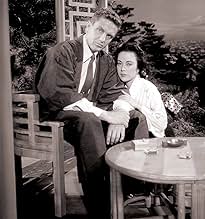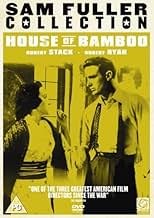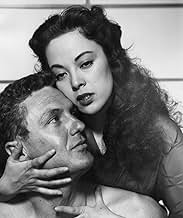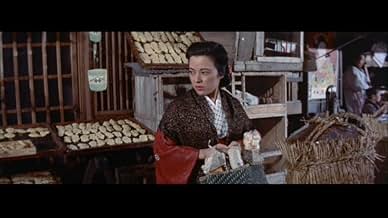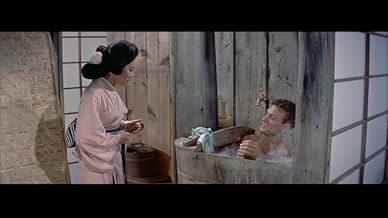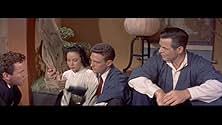IMDb-BEWERTUNG
6,8/10
4269
IHRE BEWERTUNG
Füge eine Handlung in deiner Sprache hinzuPlanted in a Tokyo crime syndicate, a U.S. Army Investigator attempts to probe the coinciding death of a fellow Army official.Planted in a Tokyo crime syndicate, a U.S. Army Investigator attempts to probe the coinciding death of a fellow Army official.Planted in a Tokyo crime syndicate, a U.S. Army Investigator attempts to probe the coinciding death of a fellow Army official.
Clifford Arashiro
- Policeman
- (Nicht genannt)
Sandy Azeka
- Charlie's Girl at Party
- (Nicht genannt)
Harry Carey Jr.
- John
- (Nicht genannt)
Barry Coe
- Captain Hanson's Aide
- (Nicht genannt)
John Doucette
- Skipper
- (Nicht genannt)
Fuji
- Pachinko Manager
- (Nicht genannt)
Samuel Fuller
- Japanese policeman
- (Nicht genannt)
Peter Gray
- Willy
- (Nicht genannt)
Handlung
WUSSTEST DU SCHON:
- WissenswertesAccording to Robert Stack, Samuel Fuller told an actor to go down really low when he passed a 50-gallon drum. Without informing the actor, the director had a sharpshooter on a parallel who shot over the man's head and into the drum. After it blew up, the actor said, "Jesus Christ! Those were real bullets!" Fuller laconically replied, "Don't worry. He knew what he was doing."
- PatzerSandy fires an awful lot of shots from his pistol (which is a revolver) without ever appearing to reload it.
- Zitate
Sandy Dawson: Who are you working for?
Eddie Kenner: [posing as Eddie Spanier] Spanier.
Sandy Dawson: Who's Spanier?
Eddie Kenner: Me.
Sandy Dawson: Who else you working for?
Eddie Kenner: Eddie.
- VerbindungenEdited into Schock-Korridor (1963)
Ausgewählte Rezension
In the mid-1950s, using the same screenwriter (Harry Kleiner) and cinematographer (Joe MacDonald) as in the original, the unpredictable Samuel Fuller remade 1948's The Street With No Name as House of Bamboo. For starters, he set in not in anonymous Center City but in post-war Japan -- the first American movie filmed there since the Second World War.
Even in color, Fuller's Tokyo has a grey, slummy look to it, punctuated only by women in blood-red kimonos shuffling through the Ginza. It's an open city where vice flourishes and where ex-G.I. Robert Ryan runs a string of pachinko parlors as a cover for a crime ring. Military investigators and Japanese police tumble to these activities when a U.S. guard dies during a train robbery. And thus enters Robert Stack, sent by the army to infiltrate the gang and solve the murder.
Fuller deals his cards from a deck shuffled differently from his predecessor, William Keighley (who directed Street). It's not clear at the outset who Stack is, keeping us off-balance for a while; there's also a cross-cultural love affair between Stack and Shirley Yamaguchi, the widow of a slain gang member -- Ryan's standing orders are to leave no wounded to tell tales. A twisted erotic charge links Ryan to his pursuer; hinted at in the original, here it deepens the dynamic of Ryan's jealous obsession with his "ichiban," or favorite lieutenants.(There are enough sliding rice-paper screens to fill all of Douglas Sirk's movies with metaphorical barriers, too.)
Far from merely capitalizing on the 50s fad for shooting on locations around the newly opened globe, Fuller seems to construct another metaphor -- for the Occupation of Japan as exploitative, parasitic. Luckily he doesn't press this too far, and House of Bamboo stands as an offbeat, deftly made crime thriller from late in the noir cycle -- albeit with Mount Fujiyama squatting serenely in the background.
Even in color, Fuller's Tokyo has a grey, slummy look to it, punctuated only by women in blood-red kimonos shuffling through the Ginza. It's an open city where vice flourishes and where ex-G.I. Robert Ryan runs a string of pachinko parlors as a cover for a crime ring. Military investigators and Japanese police tumble to these activities when a U.S. guard dies during a train robbery. And thus enters Robert Stack, sent by the army to infiltrate the gang and solve the murder.
Fuller deals his cards from a deck shuffled differently from his predecessor, William Keighley (who directed Street). It's not clear at the outset who Stack is, keeping us off-balance for a while; there's also a cross-cultural love affair between Stack and Shirley Yamaguchi, the widow of a slain gang member -- Ryan's standing orders are to leave no wounded to tell tales. A twisted erotic charge links Ryan to his pursuer; hinted at in the original, here it deepens the dynamic of Ryan's jealous obsession with his "ichiban," or favorite lieutenants.(There are enough sliding rice-paper screens to fill all of Douglas Sirk's movies with metaphorical barriers, too.)
Far from merely capitalizing on the 50s fad for shooting on locations around the newly opened globe, Fuller seems to construct another metaphor -- for the Occupation of Japan as exploitative, parasitic. Luckily he doesn't press this too far, and House of Bamboo stands as an offbeat, deftly made crime thriller from late in the noir cycle -- albeit with Mount Fujiyama squatting serenely in the background.
Top-Auswahl
Melde dich zum Bewerten an und greife auf die Watchlist für personalisierte Empfehlungen zu.
- How long is House of Bamboo?Powered by Alexa
Details
- Erscheinungsdatum
- Herkunftsland
- Sprachen
- Auch bekannt als
- House of Bamboo
- Drehorte
- Tokio, Japan(rooftop playground of the Matsuma department store)
- Produktionsfirma
- Weitere beteiligte Unternehmen bei IMDbPro anzeigen
Box Office
- Budget
- 1.380.000 $ (geschätzt)
- Laufzeit1 Stunde 42 Minuten
- Seitenverhältnis
- 2.55 : 1
Zu dieser Seite beitragen
Bearbeitung vorschlagen oder fehlenden Inhalt hinzufügen





